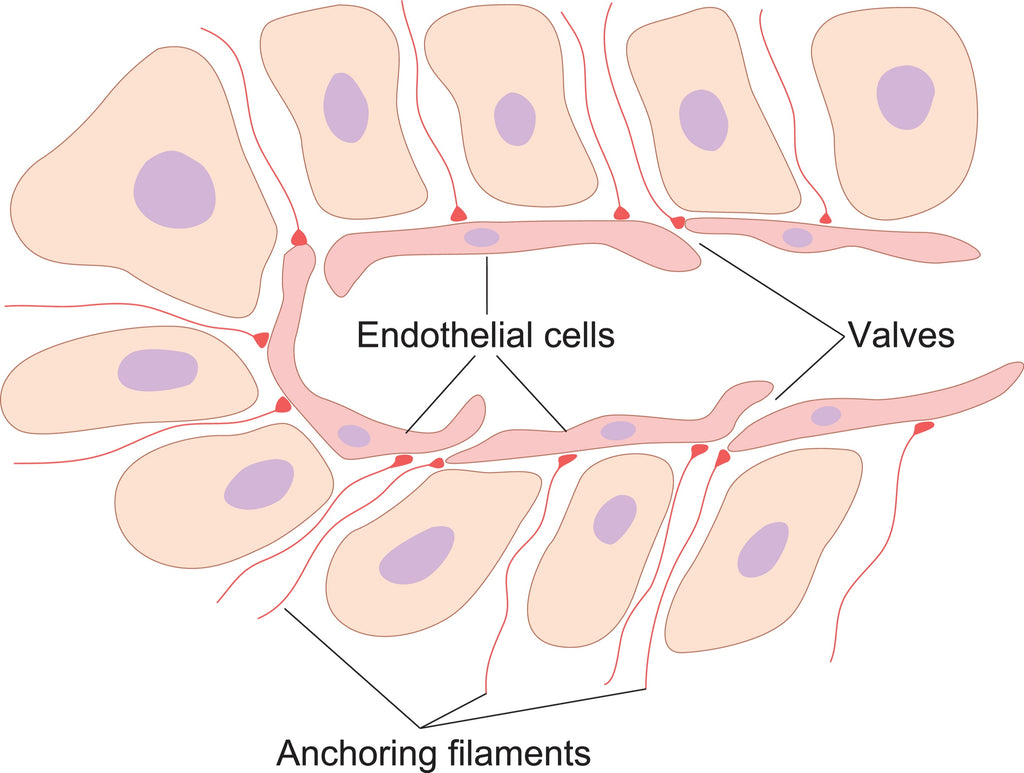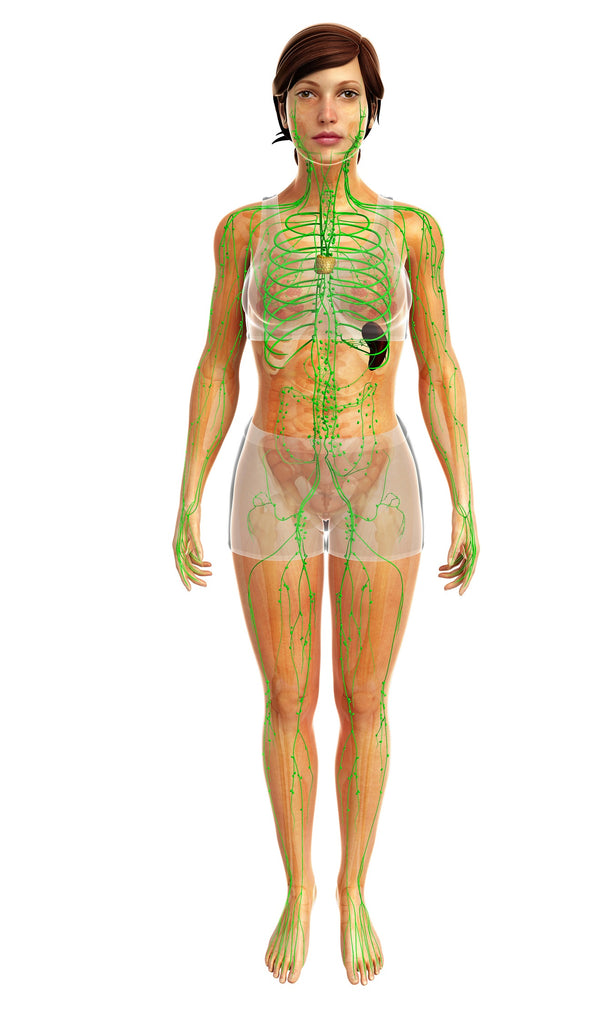Author: Selena Belisle, Owner/Instructor, CE Institute LLC, Miami FL
Question: Can Moderate or Deep Pressure be Applied in Lymphatic Drainage?
Answer: No, No, No, No, and HELL NO!!!!!
Lymphatic Drainage is typically considered a bodywork to reduce facial or body swelling through specialized skills, techniques and practices. It is not the same as Swedish massage which would encourage strokes towards the heart to promote venous return. In massage we promote blood circulation. In lymphatic drainage, we teach you to work with something entirely different.
While massage generally promotes strokes towards the heart, some lymphatic drainage strokes work away from the heart to promote a reduction in swelling. Lymphatic drainage is different from almost any other form of massage or bodywork. Lymphatic drainage requires specialized training, and should be sought in a live hands-on board approved CE class where an instructor can observe and provide feedback of your hands-on practice.
Some leading reasons why a client might want a specialized lymphatic drainage session is because they suffer from lymphedema - which is a permanent medical dysfunction of the lymphatic system. They could also have swelling from an orthopedic or cosmetic surgery, sports strain, or swelling from oncology treatments such as radiation or a lymphadenectomy. Lymphatic drainage is a wonderful modality to relieve swelling without pharmaceutical intervention.

In order to relieve swelling in the body via lymphatic drainage, we take extra interstitial fluid within the tissues and encourage this fluid to enter the lymphatic system. The lymphatic capillaries that collect this fluid are miniscule. In theory, if you apply too much pressure to these miniscule capillaries, they will simply collapse and not collect any fluid, until they reconstitute themselves. This is explained further in CE Institute's live lymphatic CE classes.
Lymphatic drainage strokes are designed to encourage extra interstitial fluid to be collected by these miniscule capillaries to promote true drainage of the tissues. This excess fluid will then travel through larger and larger lymphatic vessels and ducts - and eventually make it's way back to the heart and cardiovascular system.
I believe the reason why some therapists are practicing deep tissue and misnaming it lymphatic drainage, is because there can be some tissue changes leading to some fluid drainage with a deep tissue massage. That is because common problems such as stress, overuse, and misuse of the body, can lead to muscle tightness. This muscle tightness will create excessive pressure on circulatory vessels which can obstruct overall general circulation. So, when an effective deep tissue session is provided, these tight tissues relax and allow better "drainage" of the tissues via newly unrestricted circulatory vessels. However, this deep tissue massage result should NOT be called lymphatic drainage - it's NOT. Better fluid exchange within the tissues is a simple benefit of increased circulation with a good massage. Deep tissue or moderate pressure massage should never be confused with the specialized skills and strokes developed to encourage the uptake of interstitial fluid into miniscule lymphatic capillaries for true lymphatic drainage.
What's more important to note is that any deep tissue pressure applied to swelling is likely to produce more swelling and tissue damage. That is because applying pressure to swollen and stretched tissues may further stretch or tear the swollen tissues. That is why swelling is a general massage therapy contraindication; however, swelling IS indicated for lymphatic drainage (minus a few contraindications which you would learn in any of our live lymphatic CE classes).
It's one thing to practice deep tissue massage and increase overall circulation as a result - but it could be extremely harmful to apply that same deep pressure on post-surgical swelling or a damaged lymphatic system and expect something positive to happen - you'll likely be sorely disappointed (or have a claim for malpractice).
There are some people who get lucky by claiming they are performing lymphatic drainage while trying to "force" bodily fluid/swelling out of surgical incisions, etc. That type of unthinkable, forceful, painful, swollen tissue manipulation could cause a greater amount of scar tissue, fibrosis and/or infection than the initial trauma or surgery itself. Keep in mind, a client may appreciate a forceful physical temporary removal of swelling while on opioids. And that type of client could unknowingly seek even more of the same when they become additionally swollen from improper care. It's difficult for a client on opioids who has just had surgery and is being told that they are receiving "therapy" to understand that the "therapy" of forcibly working on swelling is hurting them - not helping! We asks therapists to use some common sense in realizing that applying moderate to deep pressure to swollen tissues is NOT helping your client, or you.
To learn more, because there are so many more erroneous practices, you really need to take a board approved live CE class where you can have instructor interaction with questions, answers and scientific theory. Try to take a course with an instructor who has clear scientific, evidence-based education of the lymphatic system itself and extensive practice in the modality of lymphatic drainage. There are too many factors that go into the practice of lymphatic drainage which cannot be solely collected off from a blog, youtube or the internet in general.
In summary to address the important question about pressure with lymphatic drainage in this blog, deep tissue, myofascial release and other moderate to deep pressure techniques are NOT, and will never will be, appropriate lymphatic drainage bodywork techniques - 24/7/never.
Please click HERE to if you would like to learn more about lymphatic drainage and other available classes at CE Institute LLC.
________________
This lymphatic drainage post was written by CE Institute LLC Founder, Selena Belisle. Selena initially studied Vodder-style Lymphatic Drainage in 1995 at the Massage Institute of New England in Cambridge, Massachusetts - – the same city where other schools such as MIT and Harvard University are located.
Selena has attended and studied in numerous lymphatic online and live classes (including initial lymphatic re-mapping research and studies in 2003). She found her studies of lymphatic drainage to be “frustrating”, given the amount of conflicting and misinformation amongst instructors. As such, Selena spent hundreds of additional hours sorting through research and published studies to create this evidence-based course where the efficacy of our teachings are 100% backed by scientific data. You can view a more complete list of Selena’s accolades including her publications, training and experience by clicking HERE.
In addition to practicing lymphatic drainage for 25 years, Selena managed/owned an alternative health care practice for 10 years that serviced thousands, and employed over 40 massage therapists, 4 chiropractors and 4 acupuncturists in Quincy & Braintree, Massachusetts, until she sold in 2005. Lymphatic Drainage was one of the many modalities offered in this large group practice. The lymphatic drainage appointments that were practiced for over a decade at Selena's health clinic provided much relief for her clients, and was a wonderful healing alternative for customers who were contraindicated for regular massage.
Selena is a also a retired professional athlete with 3 WAF World Championships. She has competed in places like the Athens Olympic Stadium and has worked on scores other athletes, including a player from every single team in the NFL (and accolade not many have accomplished). She also earned a 2017 Award from Dana Farber & the Jimmy Fund for: “in recognition of extraordinary support of research and patient care at Dana Farber Cancer Institute, leading to breakthroughs against cancer”. She has worked as a volunteer at the Miami Cancer Institute in the infusion wings, and has spent decades working to help cancer and lymphedema patients.
Selena’s long history, experience, studies, practice and instruction of manual lymphatic drainage makes her one of the foremost leading instructors of the modality today.










